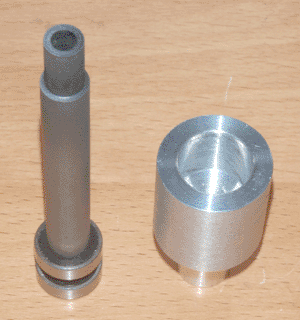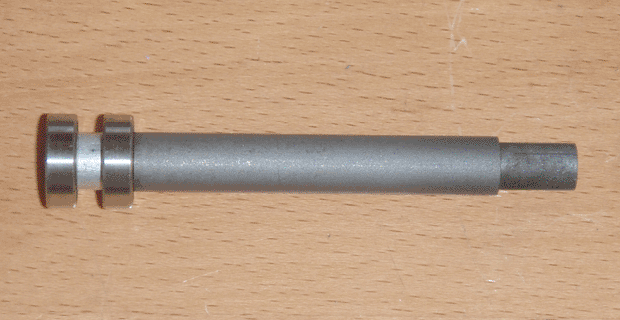

For previous vacuum tubes, I made the base seals by hand. This was impossible to do in a precise or repeatable fashion; the base was balanced inside the upside-down envelope and heated until it stuck. the position and angle at which it stuck were largely up to chance. To improve on this, I made a mandrel that fits inside the base and is mounted on ball bearings, so that the base can rotate with the envelope when it is held in the chuck of my lathe. The mandrel also shields the base leads from the torch flame, which would oxidize or melt them.
The construction is very straightforward. A piece of 1 inch diameter aluminum rod was turned down to 1/2 inch on one end, so it can be held in the tailstock chuck. The other end has a 5/8 inch hole drilled in it, to hold the ball bearings. The mandrel itself is made of 3/8 inch graphite. One end is turned to the inside diameter of the base tubing (in this case, 8mm) and has a 3/16 inch hole drilled in it to house the base leads. The other end is turned to 1/4 inch, to fit through the ball bearings. A small aluminum spacer separates the bearings, and everything is held together loosely so that slight misalignments won't strain the glass as it cools.
This mandrel works extremely well, and makes sealing tube bases trivial. Its design will also allow me to make interchangeable mandrels for different sized tubes in the future. The pictures below show it in use; note the quality and concentricity of the finished seal, and the lack of oxidation on the nickel leads. The tube being assembled here is described in the next article.

